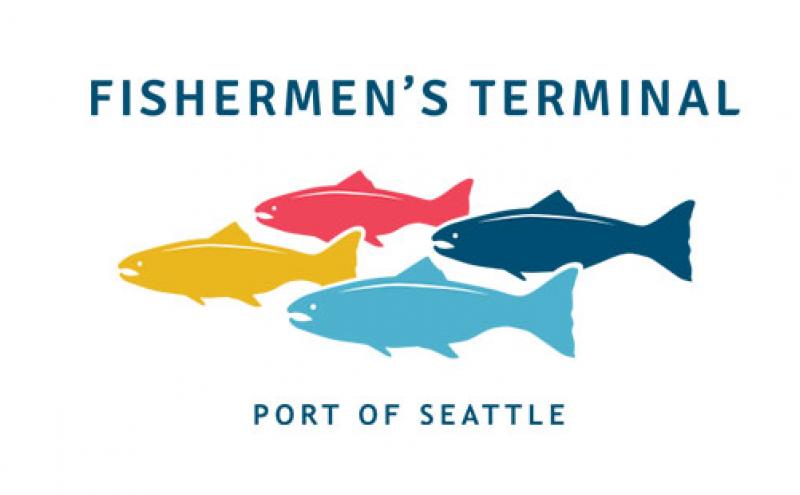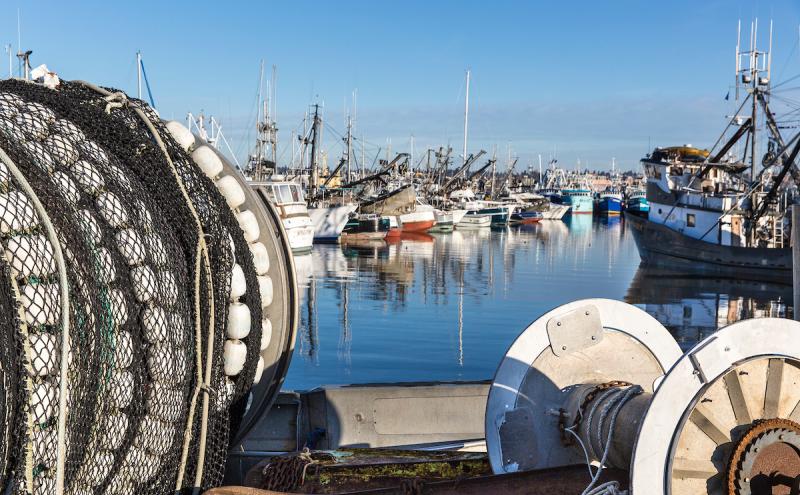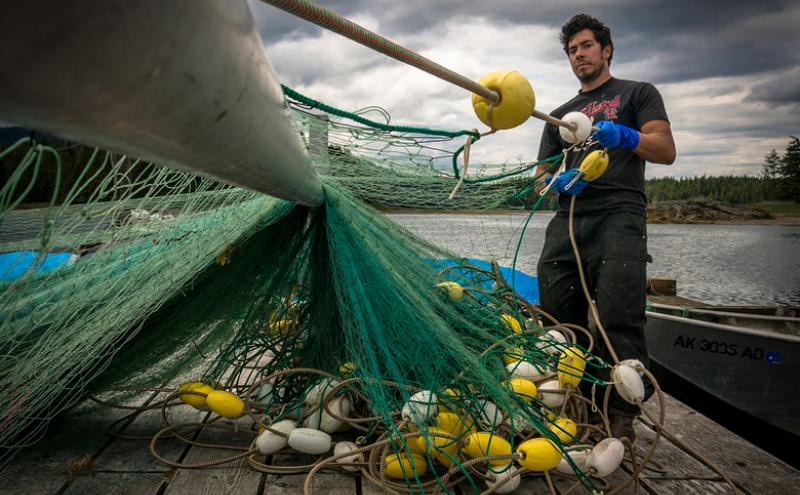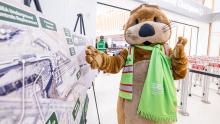This is the first of a two part installment on the adventures of the St. Jude fishing vessel and the captain and crew's experience in the commercial fishing industry in and out of Seattle. Read part 2: A Taste for Tuna.
Joe Malley keeps a faded but well-loved copy of the December 1, 1999 edition of the Magnolia News as a reminder of his family’s commercial fishing journey over the last two-plus decades. The photo and headline above the fold features Malley, his wife Joyce, and their young son Liam (now 24) standing in front of their new (at the time) fishing vessel, moored at the Port of Seattle’s Fishermen’s Terminal, as they prepared to embark on a new journey. The St. Jude, a 95-foot-troller, still makes its home at Fishermen’s Terminal today.
The St. Jude was named by a previous owner for the patron saint of hopeless causes, a symbol of choosing faith when all hope seems lost. In keeping with tradition, Malley kept the St. Jude namesake, which has served him well over the years, through a global pandemic and various challenges he’s faced in a changing industry.
Some things haven’t changed in the 23 years since the Magnolia News article was written. The St. Jude crew still fishes 12 months a year, chasing albacore tuna from the North Pacific in summer to the South Pacific in fall. In between journeys they sell their catch off the St. Jude at Fishermen’s Terminal.
“Selling off the dock and at farmers markets is how we get to know people and people get to know us,” he said. “There's a satisfaction in getting to know your customers that way and getting them to know you that way.”
The Malleys and their crew are part of a commercial fishing legacy that has fed the world and economies of the Pacific Northwest and state of Alaska for more than 100 years. The Pacific Northwest region supplies 13% of the total U.S. commercial fisheries harvest by value. Commercial fishing activities at the Port of Seattle generated more than $671.2 million in business output in 2017 and supported 7,200 jobs.
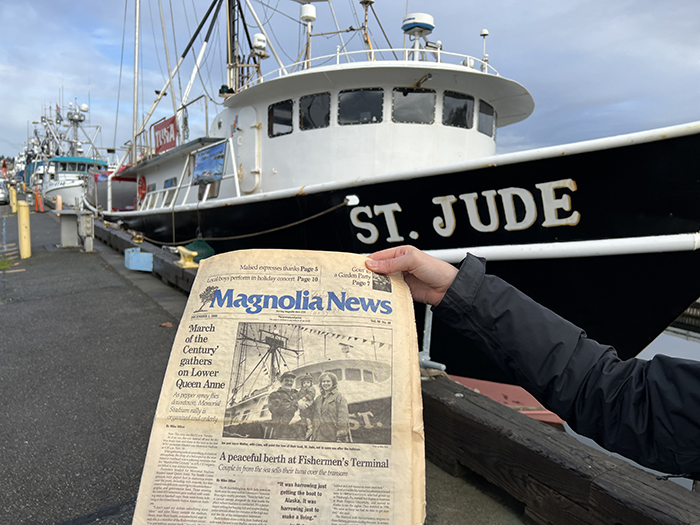
An unconventional career
Malley began his fishing career in 1978, starting with salmon trolling in Sitka, Alaska, then longlining for halibut, black cod, and Pacific cod around the Gulf of Alaska. Over the years he worked his way up through progressively larger boats to the St. Jude.
Malley arrived in the commercial fishing world the way he does everything — in an unconventional way.
“I’ve always wanted my life to be an adventure,” he said.
Near the end of the Vietnam War, he was working as a Graduate Teaching Fellow at the University of Oregon teaching mathematics. College enrollments were dropping and job prospects for a college professor were dismal. He became disenchanted with the idea of becoming an academic and his girlfriend at the time had a brother-in-law who was fishing up in Petersburg, Alaska.
She advised Malley to talk to him, paving the way for his career in commercial fishing. He bought a boat in Coos Bay, Oregon, and headed North to Alaska, never looking back.
“At that moment, I had really never driven a boat that didn't have a little outboard on the back,” he said. “I was woefully unprepared for the prospect of becoming a fisherman and especially a captain. I had never been a deckhand. I'd never really worked at fishing except for fun.”
He found that the lifestyle appealed to him – the sense of adventure, autonomy, and teamwork required to be successful.
“I would say the most fundamental quality that you have to have is something of a disdain for conventional values,” Malley said. “Fishermen also need to have a sense of adventure and a sense of inquiry about how things work. You really have to have an open mind and not a great deal of arrogance. And maybe the most important attribute of being a fisher is empathy.”
As a fishing boat captain, the buck stops with Malley.
“I've never had a boss that I can go to and say, ‘Hey, boss, the engine is smoking. What are we going to do? It's always my engine that's smoking and my problem to figure out what to do with.”
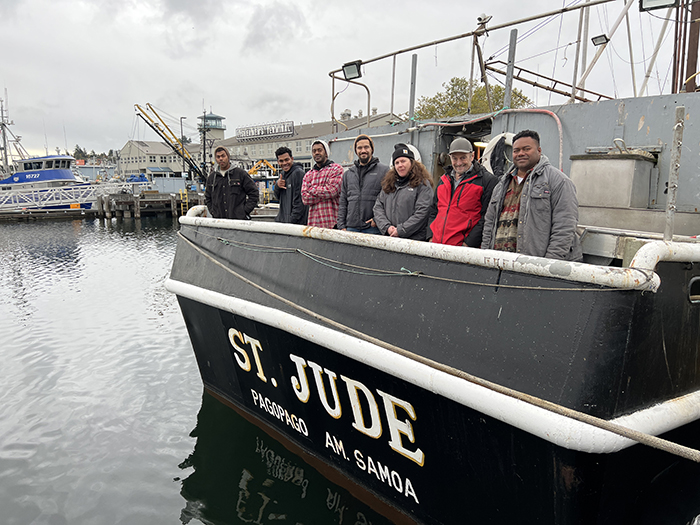
An accidental career
Paul Raikeve has been a crew member on the St. Jude for three years, serving as a machinist and cook and has been fishing for 22 years. Raikeve, from Fiji, makes up one of the five-person (80% Fijian and 20% American Samoan crew) on the St. Jude.
Working on a fishing boat means manual labor, close quarters, unpredictable working conditions, and being away from home and family for months at a time. It isn’t for everyone, but it can be a labor of love.
Raikeve entered the fishing industry by accident. He was studying to be a diesel mechanic and was enrolled in the British Armed Forces and scheduled to fly out soon. One day he was walking along the shore in Fiji when he saw an American fishing vessel loading a ship and found out they were short one crew member.
“I stopped to help them and that was it; they told me on would be a crewmember for a 14-day trip but it was 14 days just to get there. And then another five months. But it was it was fun to do. Not everybody can do it.”
He said being happy and resilient is an important part of being a fisher.
“You should be able to handle and endure lots of things. You’ve got the weather, you're thrown off your bunk, we can't cook today, or something broke. So you have to absorb it and just keep moving forward.”
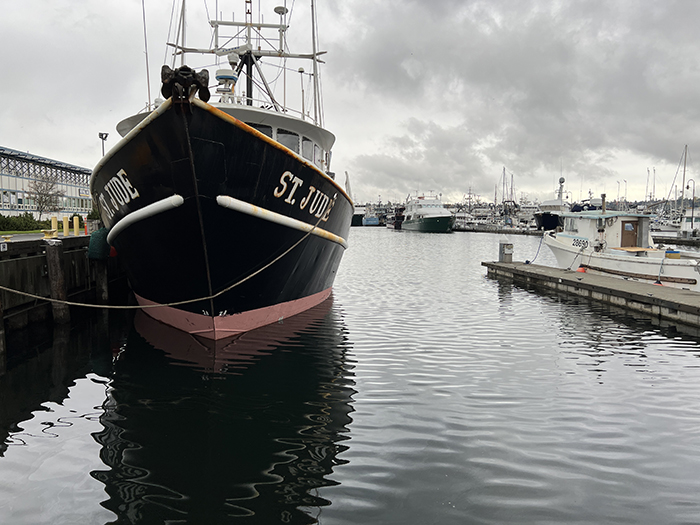
Preserving Washington’s oldest industry
Malley and Raikeve are part of a shrinking workforce as the “silver tsunami” of aging workers begins to retire.
Raikeve said introducing young people to fishing careers is an important part of keeping the industry afloat. The Port has partnered with other organizations to help establish a Maritime High School in the Seattle area and holds maritime career awareness events to expose young people to an industry they may not have considered before.
The infrastructure that supports the fishing industry is also shrinking. Malley said along the coast, especially in California, commercial fishing moorage and services have been replaced with waterfront condos and yachts in the water.
“It can be pretty hard to find a place where you can take this boat in and tie up,” Malley said. “What bothers me is its irreversibility. Once you've built those condos, once you've dragged those yachts in there, it's never going to go back.”
He said preserving facilities like Fishermen’s Terminal is important to sustaining the maritime industry and its legacy.
“I hope we get more boats in selling fish off the boat and more folks walking around coming down here for a weekend to learn what the difference is between a trawler and a long-liner. I think kids need to be introduced to those sorts of things if we want the industry to stay.”

